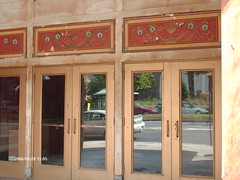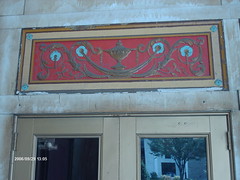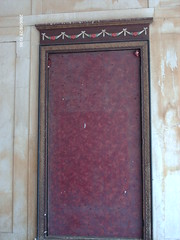
A story in Sunday's New York Times Connecticut section titled "A Renaissance in Full Bloom for Aging Thearers," by Elizabeth Maker, prompted today's entry.
RICK DOYLE remembers when icicles hung from the ceiling and saplings grew amid the mold and broken glass in the lobby of the abandoned Warner Theater in the early 1980s. Despite its artistic history, the 1931 landmark building appeared headed to becoming just another city parking lot.
Today, $20 million later, the Warner Theater in Torrington is
a magnificent example of the height of Art Deco, rivaling even the Bushnell in Hartford.

The state allocated $65 million in bonds for theater projects in the last decade, and the commission [the State Commission on Culture and Tourism] gave $555,000 in grants to 25 theaters in the last fiscal year to help with operating costs.
The Palace Theater in Danbury is in the same position that the Warner was 25 years ago, but it hasn't received any of that money. If not for the Martha Apartments, it might have already become a parking lot by now.

In Stamford, the Palace Theater, built in 1927, recently underwent a $16 million renovation, and a $2 million project is planned for the subground space, including a 199-seat theater and a new performing arts education center to be named after Pitney Bowes, one of the Palace’s benefactors.
The Palace was still a movie theater when I moved to Danbury. Over the years it was split up into three smaller screens, with only remnants of its former glory showing here and there. I wish I could show you a picture of the lobby, but it's been closed for years.
In Waterbury, the Palace Theater, which opened its doors in 1922 but had been closed for 18 years, reopened in 2004 after a $30 million makeover. “Our ticket sales went up last year to 105,000, from 90,000 the year before,” said the theater’s executive director, Frank Tavera.
It's not too late for the same kind of miracle to happen in Danbury.
In Torrington, the Warner’s executive director, James Patrick, walked along Main Street, showing off a 50,000-square-foot space, next to the theater, that is being transformed from a vacant department store into the Warner’s new Carole and Ray Neag Performing Arts Center, named for the benefactors who donated $1 million last year to the project. The center will include classrooms, a new 200-seat theater and several retail stores and restaurants surrounding a grand lobby.
The record number of ticket sales last year — 92,000, up from over 80,000 the previous year — “shows you how much people love this place,” Mr. Patrick said.
“And look what the Warner has done for this city,” he added, pointing across the street at freshly painted building facades and bustling new businesses. “Torrington has gone from a depressed old mill town to a thriving arts center that’s just teeming with life.”




